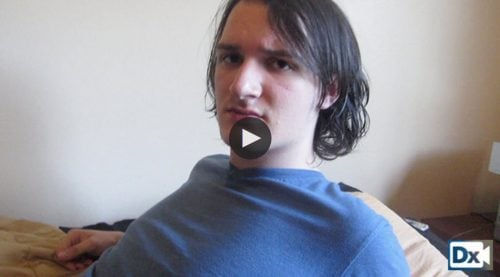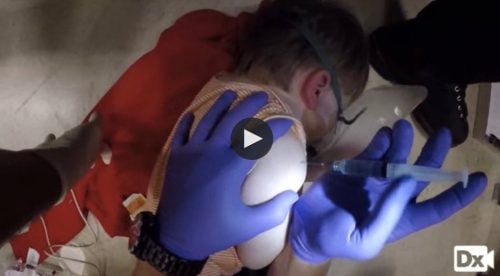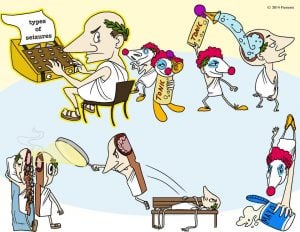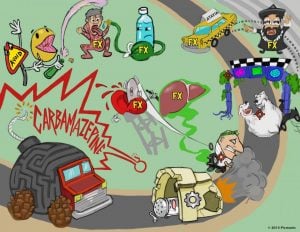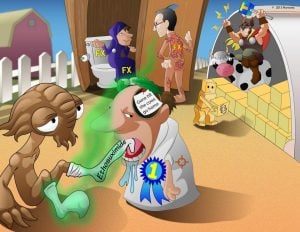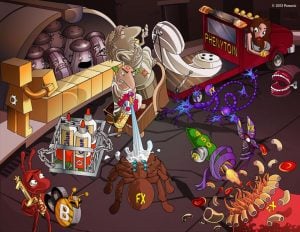17 y/o with confusion and disorientation following a 5-minute seizure
Patient will present as → a 22-year-old man is brought to the emergency department by his wife. While he was raking leaves in the backyard, he suddenly lost consciousness, became rigid, and fell to the ground. His respirations temporarily ceased. This lasted for approximately 45 seconds and was followed by a period of jerking of all four limbs lasting 2 or 3 minutes. The patient then remained unconscious for 3 or 4 minutes.
To watch this and all of Joe Gilboy PA-C's video lessons you must be a member. Members can log in here or join now.
Generalized (both hemispheres)
- Start midbrain or brainstem and spreads to both cortices
"A seizure is a single occurrence, whereas epilepsy is a neurological condition characterized by two or more unprovoked seizures"
- Characterized by brief impairment of consciousness with an abrupt beginning and ending. At times involuntary movements may occur, but they are uncommon and the patient has no recollection and witnesses commonly miss them
- Start around age 3
- Lasts less than 15 seconds, occurs frequently
- EEG: during an event would show symmetric 3-Hz spike and wave activity
- TX absence seizures with Ethosuximide
Tonic-Clonic (Grand mal)
- Tonic phase: very stiff and rigid 10-60 seconds.
- Clonic phase: generalized convulsions and limb jerking
- Postictal phase: confused state
- Evaluate with glucose, standard blood workup, and a CT scan
- EEG: generalized high-amplitude, rapid spiking on EEG
- TX with Phenytoin (Dilantin)
Myoclonic: muscle jerking, but not the tonic phase, occurs in the morning
Tonic: extreme rigidity then immediate LOC, but not followed by a clonic phase
- Tonic seizures are characterized by facial and truncal muscle spasms, flexion or extension of the upper and lower extremities, and impaired consciousness.
Atonic attack (drop attack): looks like syncope, sudden loss of muscle tone
- Atonic seizures (drop attacks) are not seen in many children. Without warning, a child abruptly loses consciousness, collapses and falls to the floor. There is no convulsion, but children may hit their heads as they fall. After a few seconds, the child regains consciousness and can stand and walk again.
Additional types
Febrile Seizure: A convulsion associated with an elevated temperature greater than 38°, > 6 mos < 5 years, absence of central nervous system infection or inflammation
- Febrile seizures that continue for more than five minutes should be treated with IV benzodiazepines (diazepam or lorazepam)
Todd’s paralysis: Brief paralysis after a seizure. Subsides after 48 hrs.
"Did you know: patients who may be taking Valproate (Depakote) should have LFTs monitored as Valproate may be toxic to the liver as well as cause thrombocytopenia."
*Seizures that develop during adolescence and adult life are predominantly due to tumor, trauma, drug use, or alcohol withdrawal.
Diagnostic approach: check electrolytes, glucose, pregnancy test, ECG, EEG, neuroimaging for adults with first seizure (CT/MRI)
- EEG helps to establish the diagnosis and localize the lesion
- Seizures that develop during adolescence and adult life are predominantly due to tumor, trauma, drug use, or alcohol withdrawal - In addition to blood work obtain a CT scan
Carbamazepine, phenobarbital, and phenytoin are indicated for tonic-clonic (grand mal) or partial focal seizures
- Absence, or petit mal, seizures are best treated with either ethosuximide or valproic acid. Clonazepam is also effective but can be habit-forming
 Osmosis Osmosis |
|
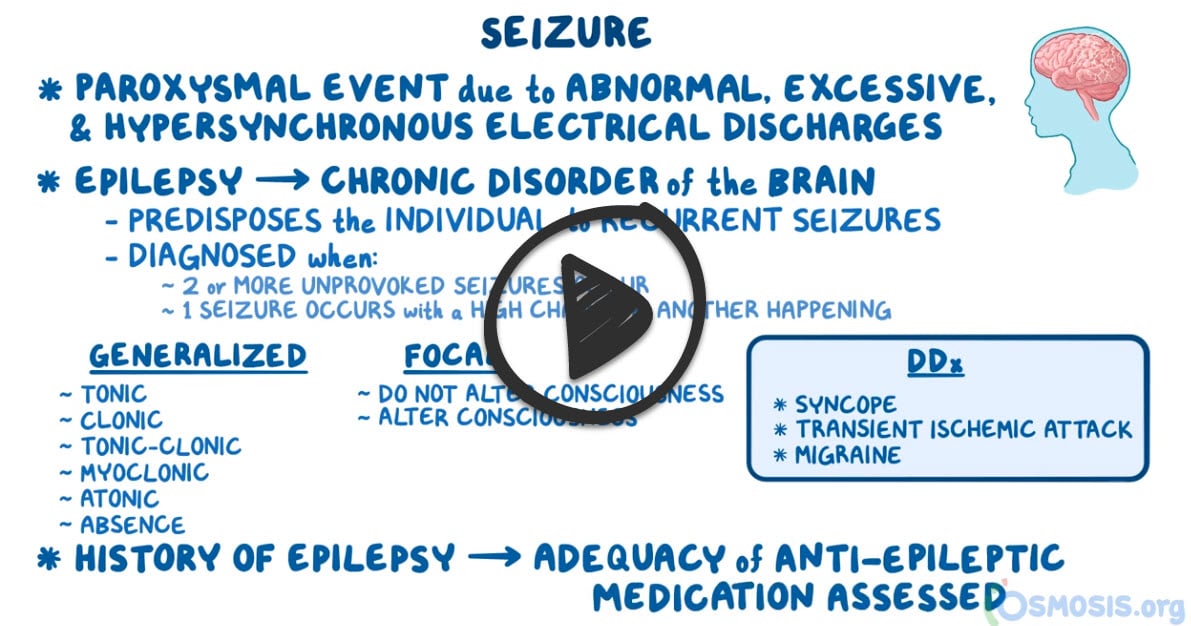 |
There are numerous types of seizures, but the most common type is the tonic-clonic seizure or grand mal. It has phases of tonicity, followed by a clonic phase, where there is jerking. Children can have absence or petit mal seizures, described as a brief staring spell. Myoclonic seizures are described as a sudden jerk of the body or extremity, while an atonic seizure is where there is excessive tonicity, or a loss in tone leading to a “drop attack.” Focal parts of the brain can be affected in partial or focal seizures, which may or may not lead to impaired consciousness.
| Types of seizures | Play Video + Quiz |
| Seizure interventions | Play Video + Quiz |
| Seizure precautions | Play Video + Quiz |
Carbamazepine (Tegretol)
Carbamazepine (Tegretol) is an anticonvulsant medication that decreases seizure activity caused by high-frequency neuronal discharge. This drug is primarily indicated for seizures but is also used to treat trigeminal neuralgia and symptoms associated with bipolar disorder. Neurological side effects such as blurred vision, vertigo, and headache are common.
Play Video + QuizEthosuximide
Ethosuximide is an anticonvulsant medication used to treat absence seizures, or petit mal seizures, which are mostly seen in school-age children. This drug is a first line agent for this neurological disorder, and is preferred over similar drugs because it does not cause hepatotoxicity. The mechanism of action for ethosuximide is blocking thalamic t-type Ca2+ channels, leading to decreased neuronal transmission.
Play Video + QuizValproic acid (Depakote)
Valproic acid (Depakote), or valproate, is an anticonvulsant and mood-stabilizing drug that works by increasing GABA concentration and blocking Na+ channels. It is mainly indicated for epilepsy, bipolar disorder, and migraine prophylaxis. This drug increases levels of the neurotransmitter GABA by inhibiting the enzyme GABA transaminase, which acts to break down GABA. Also, valproic acid decreases repetitive neuronal firing by blocking voltage-gated Na+ channels, inactivating them.
| Valproic acid mechanism | Play Video + Quiz |
| Valproic Acid (Valproate) Side Effects Picmonic | Play Video + Quiz |
Phenytoin
Phenytoin is an antiepileptic medication used to treat generalized tonic-clonic (grand mal) seizures and during status epilepticus. This drug works by blocking sodium channel activation in neuronal membranes, leading to an inhibition of glutamate release and resultingly, enhanced GABA release. Phenytoin is categorized as and also has use as a Class IB antiarrhythmic medication.
Play Video + QuizQuestion 1 |
carbamazepine Hint: Carbamazepine, phenobarbital, and phenytoin are indicated for tonic–clonic (grand mal) or partial focal seizures. | |
ethosuximide | |
phenobarbital Hint: Carbamazepine, phenobarbital, and phenytoin are indicated for tonic–clonic (grand mal) or partial focal seizures. | |
phenytoin Hint: Carbamazepine, phenobarbital, and phenytoin are indicated for tonic–clonic (grand mal) or partial focal seizures. |
Question 2 |
Strokes | |
Head trauma | |
Tumors | |
Infection |
Question 3 |
Myoclonic seizures | |
Atonic seizures | |
Absence seizures | |
Primary generalized tonic-clonic seizures |
Question 4 |
MRI | |
CT scanning | |
Positron emission tomography (PET) scanning | |
Video electroencephalography (video EEG) |
|
List |
References: Merck Manual · UpToDate


 Lecture
Lecture

